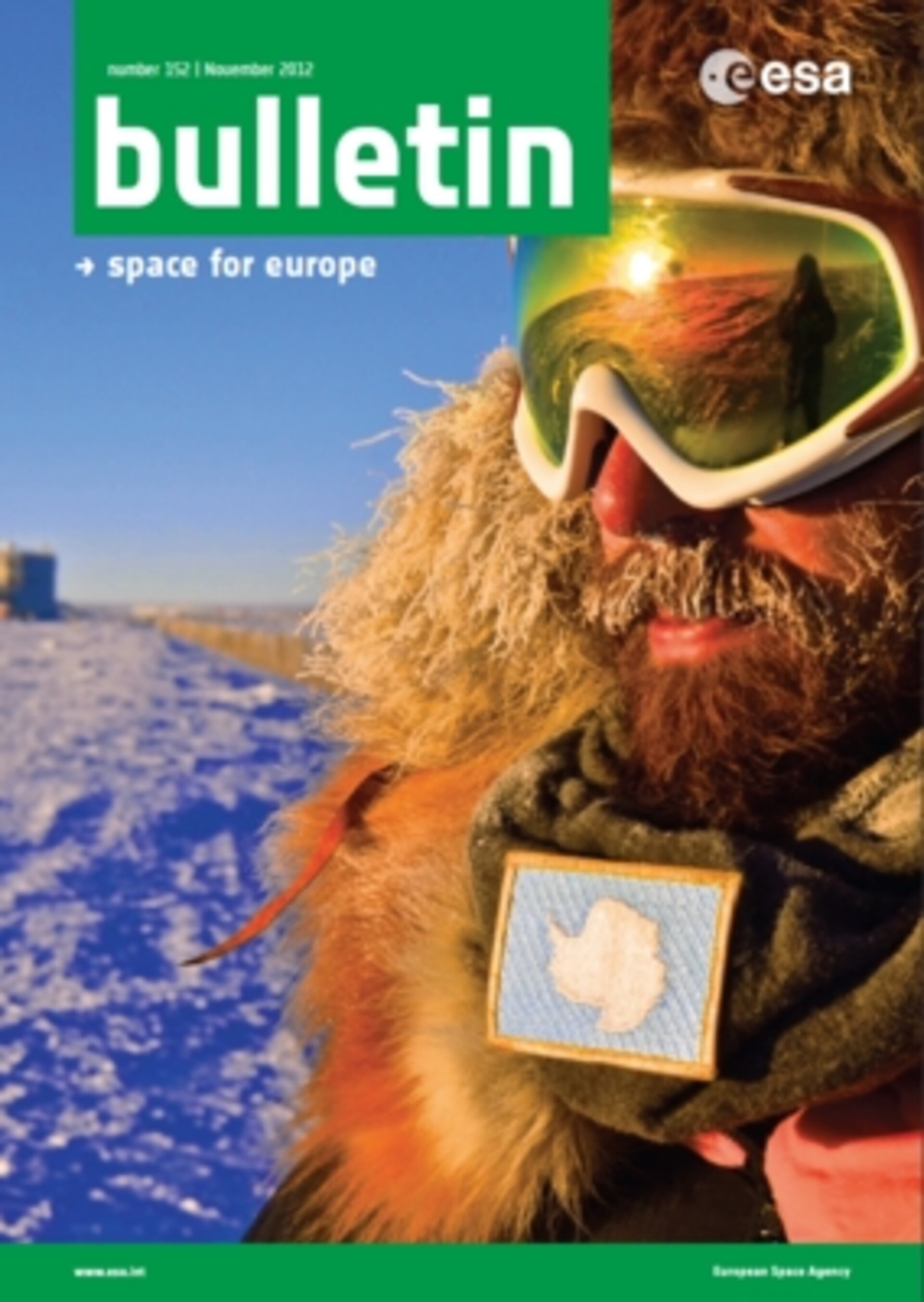ESA Bulletin 152 (Nov 2012)
Living in one of the world's most extreme environments creates an ideal opportunity to study the adaptation of human psychology and physiology in conditions similar to those of long-duration spaceflight.
Read online
Concordia is a joint French-Italian Antarctic research station. Every year it hosts a research programme coordinated by ESA and Concordia partners. ESA-sponsored medical doctor Alex Kumar has been living there since January 2012, studying the effects of isolation, confinement and lack of sunlight on the winter-over crew of 13 European scientists and technicians.
Antarctica is just one of several 'space analogues', or environments that can be used to mimic elements of spaceflight on Earth. In 'Home Alone', we look at history of these studies and how ESA is using these environments to prepare its astronauts and trainers for the real thing.
Nestled beside the dunes of Noordwijk, on the Netherlands’ North Sea coast, is ESTEC – the European Space Research and Technology Centre – the largest space centre in Europe. But did you know that the decision to locate ESTEC in the Netherlands was made half a century ago this year, in April 1962?
Celebrating 50 years of bringing space missions to life, 'ESTEC: ESA's Technical Heart' looks at the planning and development of the facility itself, which began in earnest on 1 January 1963. From designs drawn up in a garden house in Delft 50 years ago, ESTEC has become not only ESA's space hub, but also an essential part of the local economy and the Dutch knowledge and innovation infrastructure.
We celebrate one of our most successful science missions in 'Integral's Ten Years in Space'. Integral was launched on 17 October 2002 and continued to operate for the next decade. Science operations of this mission are approved until the end of 2014, and a new request to extend the mission by another two years until the end of 2016 is under review - making Integral the only hard X-ray/soft gamma-ray observatory operating for the foreseeable future.
Launched in 2009, SMOS, standing for Soil Moisture and Ocean Salinity, is observing key elements of Earth’s water cycle. SMOS is the second Earth Explorer Opportunity mission to be developed as part of ESA’s Living Planet Programme.
After three years in space, SMOS is in very good shape and the number and variety of applications of ESA’s water mission have exceeded expectations. In 'SMOS Over Land', we look at how new data products have been opening the door for more novel applications.
The ESA Bulletin is published four times a year to inform the space-interested public of ESA’s activities. In addition to a wide range of articles, every issue provides an overview of the status of ESA's major space projects.
The full archive of Bulletins is also available at ESA's Publications web site, www.esa.int/publications















 Germany
Germany
 Austria
Austria
 Belgium
Belgium
 Denmark
Denmark
 Spain
Spain
 Estonia
Estonia
 Finland
Finland
 France
France
 Greece
Greece
 Hungary
Hungary
 Ireland
Ireland
 Italy
Italy
 Luxembourg
Luxembourg
 Norway
Norway
 The Netherlands
The Netherlands
 Poland
Poland
 Portugal
Portugal
 Czechia
Czechia
 Romania
Romania
 United Kingdom
United Kingdom
 Slovenia
Slovenia
 Sweden
Sweden
 Switzerland
Switzerland



























